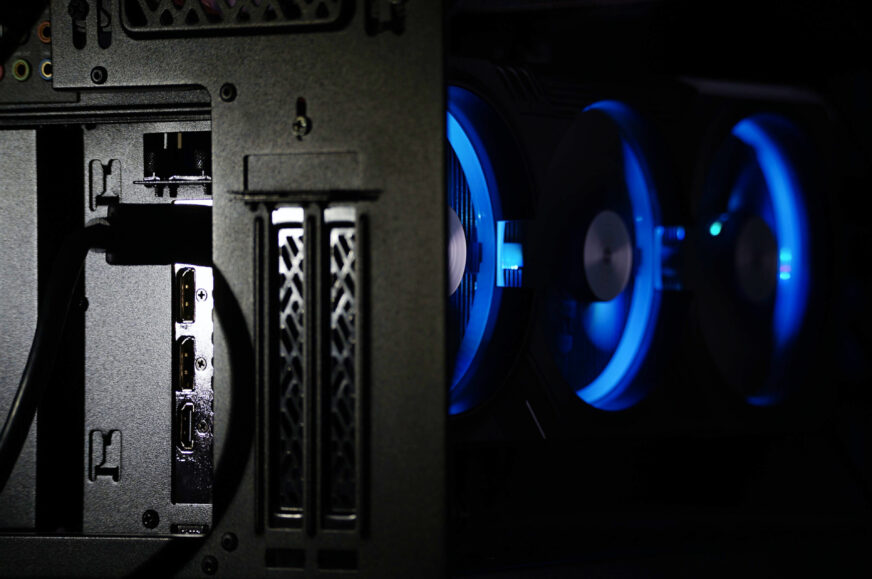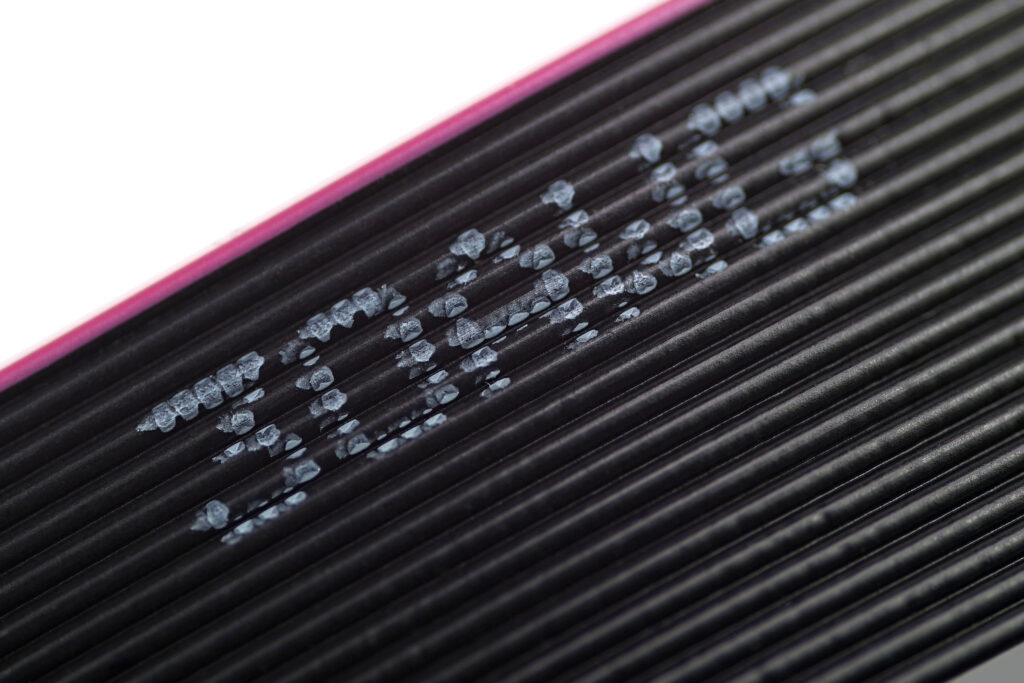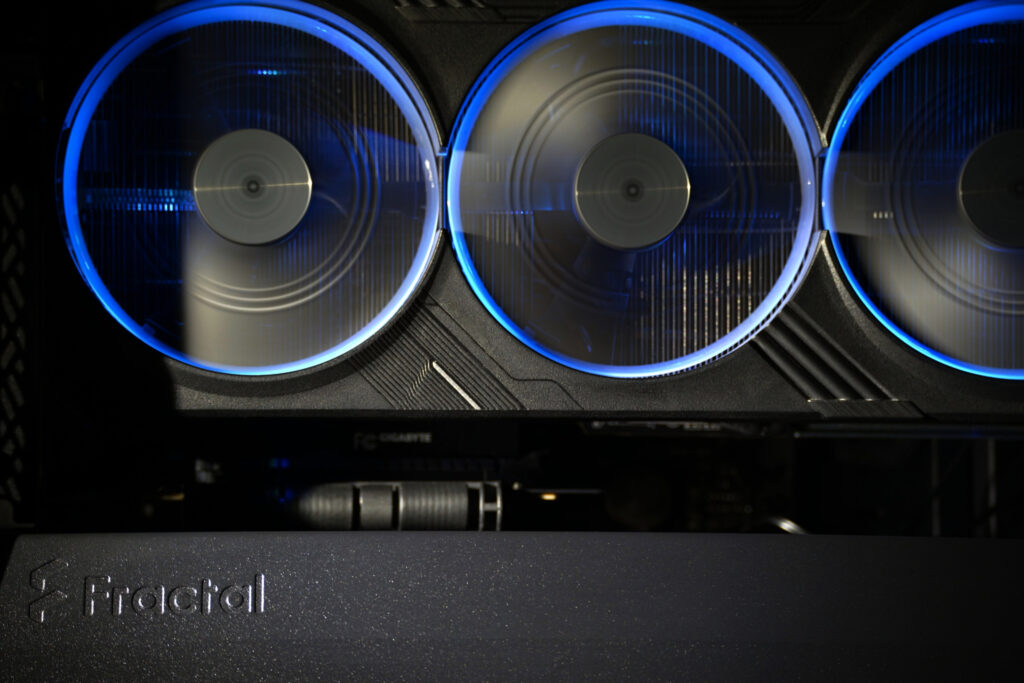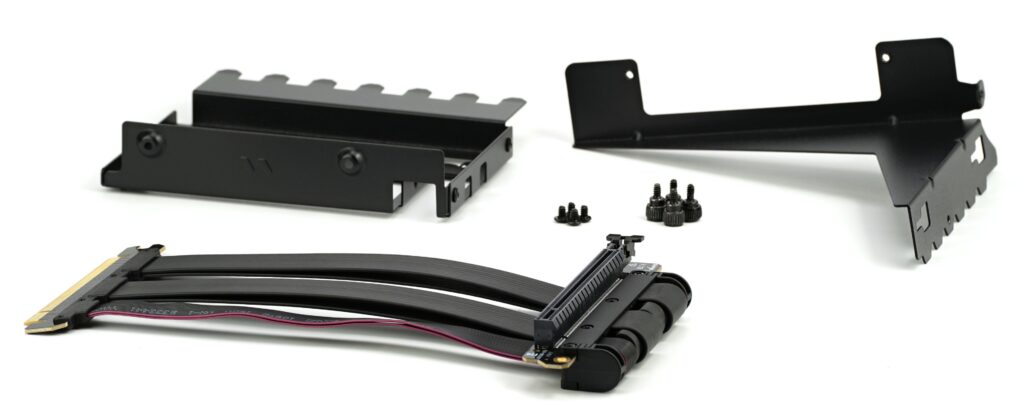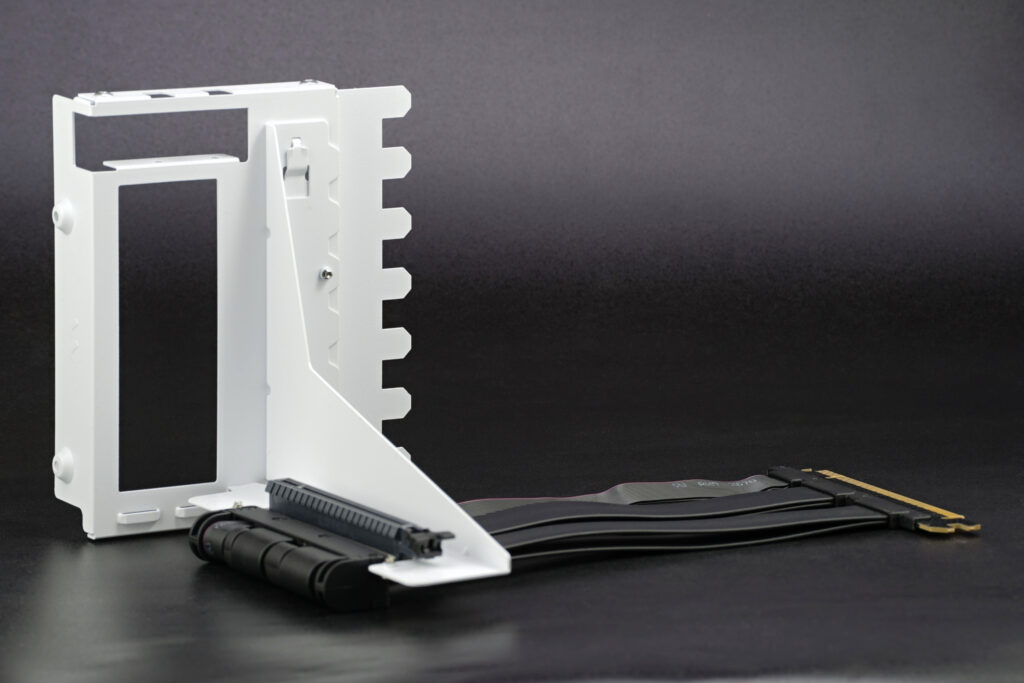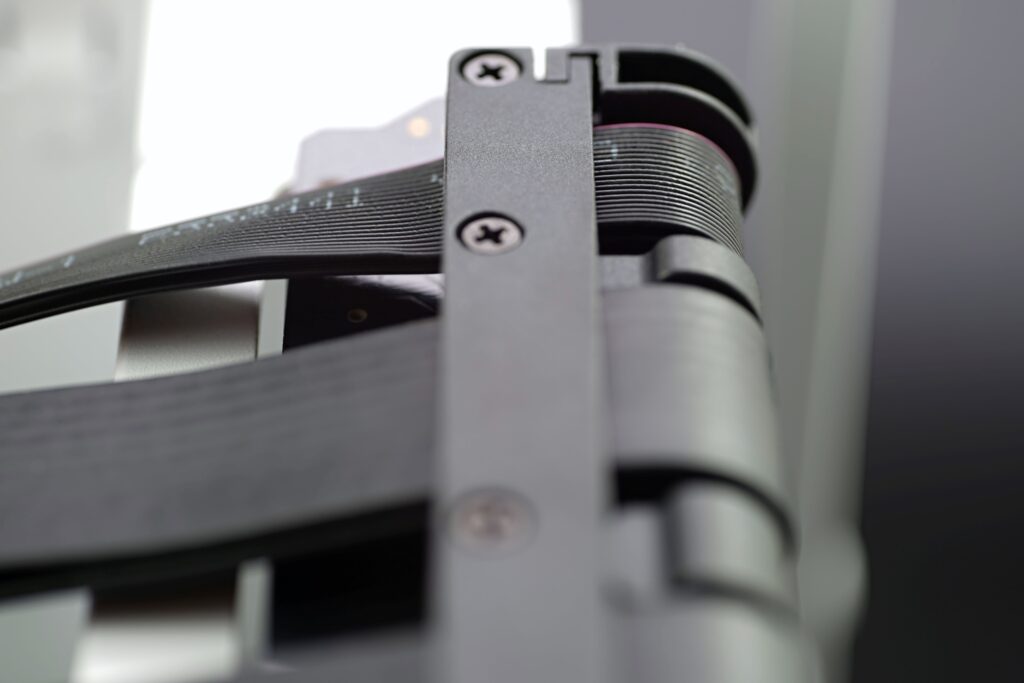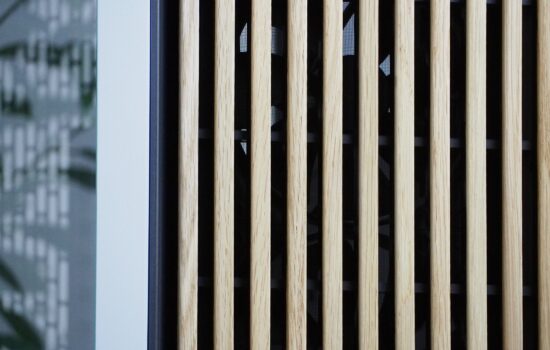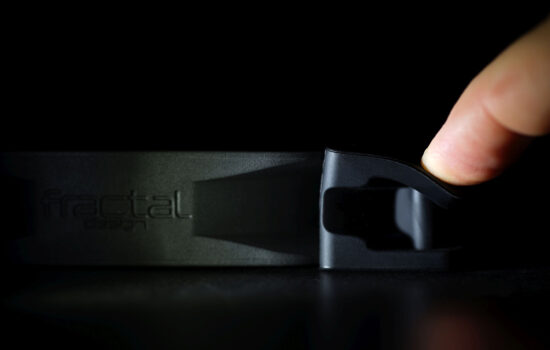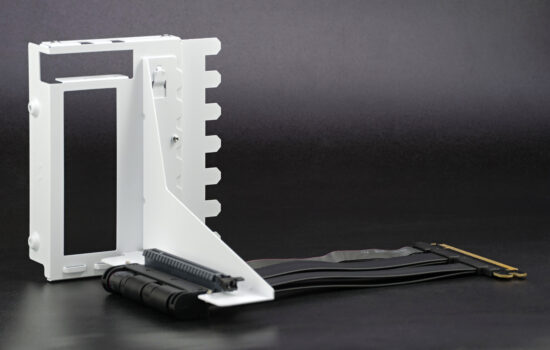Fractal Design Flex 2
You might have thought about vertical mounting of your graphics card, which many modern cases allow. You can’t do it without the right adapter, though. This usually has to be purchased as an optional accessory. We tested one such PCI Express ×16 adapter with three differently performing graphics cards. Does it or does it not affect their performance? The bottom line with the insertion of such intermediate adapters is always that “it” works at all.
It’s not a one size fits all
When selecting a PCIe riser, you need to make sure that it is indeed compatible for your device (e.g. graphics card). This means, first of all, that it does not impinge on an undersized power supply or data part. In terms of the power supply part, it is important that the resistance of the conductor (due to length, cross-section or material used) does not cause too high a voltage drop between the PCI Express slot and the device. Then, of course, the power supply would be insufficient for operation.
If the voltage is extremely low, the graphics card might not work at all. Or the system may fail under load, with higher power draw (which also has an effect on the voltage drop on the wires). What we know about the Fractal Design Flex 2 solution is that with a cable length of approximately 22 cm, wires with a gauge of ~0.05 (30 AWG) are used.
The design of the data part is also important. Especially with the high bandwidth PCIe 4.0 interface that Flex 2 supports. The clock speed of graphics cards such as the RTX 4090 is really high and in order to avoid crosstalk of signals, or to prevent individual wires from negatively affecting each other, their shielding (isolation) must be designed appropriately. If it is not, it will very quickly become apparent in the fact that the device is not working or is not working properly, which may be manifested by slower speeds or obvious errors, for example in the image displayed if the riser is used with a graphics card. And this is probably the most common use case at the moment. When the intention is to achieve vertical graphics card mounting in tower cases with a vertical motherboard mounting, without a PCIe ×16 riser it cannot be done.
The Fractal Design Flex 2, which we’ll take a closer look at, consists of a PCIe cable and an in-casie bracket. The latter is compatible with cases without fixed obstacles between the individual PCI Express slot positions. Once all the plugs have been removed, one large rectangular cutout, the entire surface area, must remain empty for the FD Flex 2 to be installed. Fractal Design lists the supported cases to include North, Focus 2, Define 7, Meshify 2, Torrent, but installation is also possible in other models of other brands.
Assembling the Flex 2, i.e. connecting the cable to the bracket, is very easy. When you start with the holder, you click the two parts together with two stoppers and screw them together for a solid connection. You also use the two screws to attach the cable to the metal bracket. Here, make sure that the PCB with the PCIe ×16 connector is below the level of the metal bracket on the sides, as you can see in the illustration photos.
The place where the 180-degree bending of the cable occurs is well reinforced to ensure that there is never excessive mechanical stress on the contacts or their eventual damage. Also noteworthy is the division of the cable into narrower strands. Compared to the Flex “1”, this has increased flexibility (the cable is easier to handle) and such a division may in some cases even have a beneficial effect on cooling. After all, it is no longer a solid “sheet”. And you don’t have to worry about a less robust design, because the wires are strung in two rows. That’s why the cable can have such large gaps between the individual bundles.
The support of graphics cards with only two-slot PCIe plugs can be considered as a weakness of the Flex 2. But you’ll only encounter three-slot ones (like the Evga RTX 2080 Ti XC) sporadically. Current cards, including the RTX 4090, come with dual-slot plugs. Sure, they take up significantly more PCIe slots in height, but in this case it’s both about the design of the cover between the outputs.
To test the Flex 2 , we used the Gigabyte RTX 4060 Windforce OC 8G, Sapphire RX 7700 XT Pure and Gigabyte RTX 4090 Gaming OC 24G graphics cards. So from some “weaker”, through faster to very powerful. The test platform is otherwise based on a Intel Core i9-14900K processor (with 2×16 GB of G.Skill Trident Z5 Neo memory, 6000 MHz/CL30) and a Asus ROG Strix Z790-E Gaming WiFi motherboard.
With and without the Flex 2 riser, we ran benchmarks in Shadow of the Tomb Raider (2160p, TAA, highest detail profile), Blender (Cycles), Classroom scene (GeForce under CUDA, Radeon with OpenCL), and Aida64 (GPU benchmark). The results and conclusion can be found in the next chapter of this article. All measurements are the arithmetic average of three passes and the test environment has a controlled temperature at the intake of the case (Fractal Design Meshify 2, tested without the left side panel) ranging in a very narrow range of 21.0–21.1 °C.





